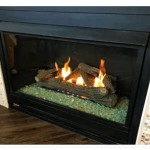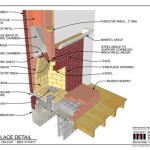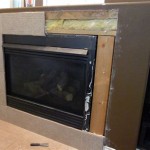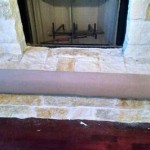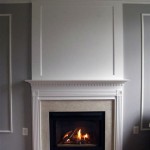Exterior Fireplace Dimensions: A Comprehensive Guide
An exterior fireplace can transform a backyard into a cozy and inviting outdoor living space. Choosing the right size and configuration is crucial for both aesthetic appeal and functionality. This article explores the various dimensions to consider when planning an outdoor fireplace, offering insights into standard sizes, proportional relationships, and factors influencing dimensional choices.
The hearth, the foundation of the fireplace, plays a vital role in safety and aesthetics. Standard hearth dimensions often extend 16 inches in front of the firebox opening, creating a safe zone. Depth typically ranges from 12 to 24 inches, accommodating firewood storage and providing visual balance. Larger hearths can be designed to function as seating areas, extending the functionality of the space.
The firebox is the interior chamber where the fire burns. Its dimensions directly impact heating capacity and the size of logs that can be accommodated. A standard firebox opening width ranges from 36 to 48 inches, offering a visually appealing flame display. Height typically measures between 24 to 36 inches, providing sufficient space for a robust fire. Depth, typically ranging from 16 to 24 inches, ensures efficient combustion and heat projection.
The chimney's height and width are critical for proper draft and smoke evacuation. Building codes often dictate minimum chimney heights based on rooflines and proximity to surrounding structures. A general guideline suggests extending the chimney at least three feet above the highest point where it penetrates the roof and two feet higher than anything within ten feet horizontally. Chimney width should be proportionate to the firebox opening, ensuring adequate airflow. A common practice is to match the chimney width to the firebox opening width or slightly smaller.
Overall fireplace dimensions vary considerably depending on design style, available space, and intended use. A compact outdoor fireplace may have a footprint as small as four feet wide by two feet deep, suitable for smaller patios or balconies. Larger, more elaborate designs can span eight feet or more in width and three feet or more in depth, creating a focal point for expansive outdoor entertaining areas. Height typically ranges from three to six feet, depending on the chimney height and design elements.
The surrounding structure that houses the firebox and chimney contributes significantly to the overall aesthetic and functionality. This structure needs to be appropriately sized to accommodate the firebox, hearth, and chimney while maintaining structural integrity. The width of the surrounding structure typically extends beyond the firebox opening on both sides, providing space for decorative elements, mantels, or built-in seating. Depth should accommodate the hearth and provide a safe clearance from combustible materials.
Several factors influence the ideal dimensions of an exterior fireplace. Available space is a primary consideration, dictating the maximum footprint of the structure. The intended use of the fireplace, whether primarily for ambiance, warmth, or cooking, will also inform the design and size. Budget constraints can influence material choices and the complexity of the design, ultimately impacting the final dimensions. Local building codes and regulations specify mandatory safety clearances and chimney height requirements, influencing both the fireplace and surrounding structure dimensions.
Proportion and scale are essential design considerations. The fireplace dimensions should be harmonious with the surrounding landscape and architecture. A massive fireplace can overwhelm a small patio, while a diminutive fireplace might appear lost in a large outdoor living space. Careful consideration of the scale and proportion of all elements ensures a balanced and aesthetically pleasing design.
When planning an exterior fireplace project, consulting with a qualified contractor or landscape architect is highly recommended. Professionals can provide expert advice on appropriate dimensions, material selection, and compliance with local building codes. They can also assist in creating a design that complements the existing landscape and meets the specific needs of the homeowner. Precise measurements and detailed construction plans are essential for a successful and safe installation.
Careful consideration of exterior fireplace dimensions is paramount for achieving both functionality and aesthetic appeal. By understanding the standard sizes, proportional relationships, and influencing factors, homeowners can create an outdoor living space that is both beautiful and enjoyable for years to come.

Outdoor Kitchen Dimensions Google Search

Outdoor Fireplace Installation Concord Ma Stoneworks

Diy Outdoor Fireplace Kit Fremont Makes Hardscaping And Easy

Pin Page

Grand Fireplace Kit Rockwood Retaining Walls

Barn Pros

All Outdoor Fireplaces

Cal Flame 48 Inch Outdoor Fireplace Elegant Hearth For Your Yard Backyard Oasis

Outdoor Fireplaces Basalite

Outdoor Fireplace Frame Dimension Form
Related Posts

